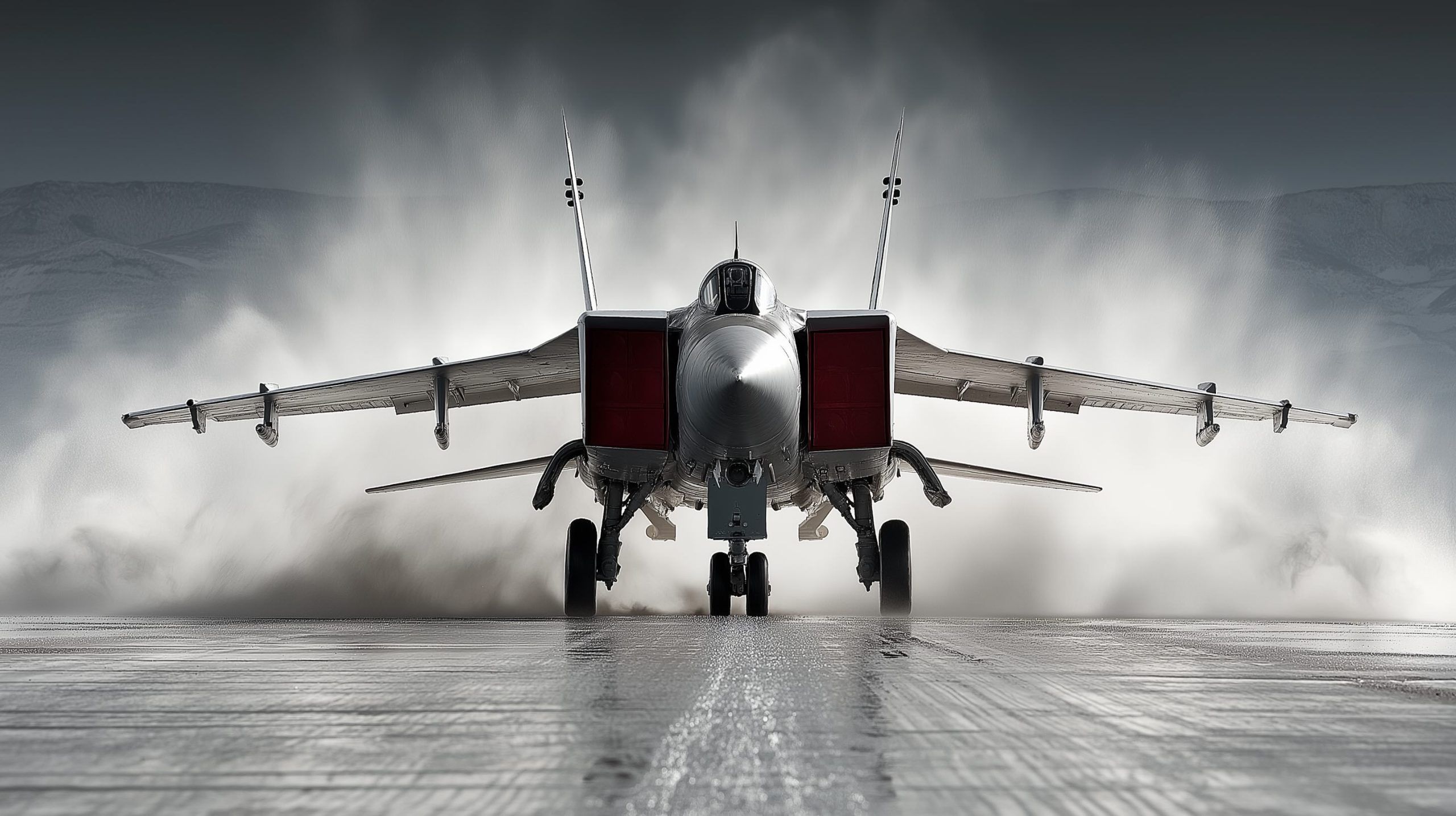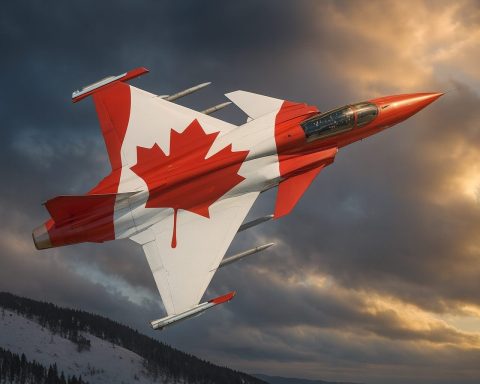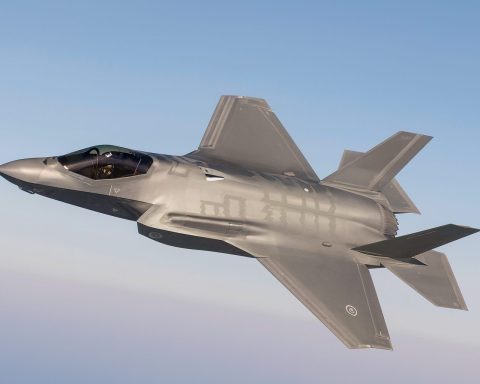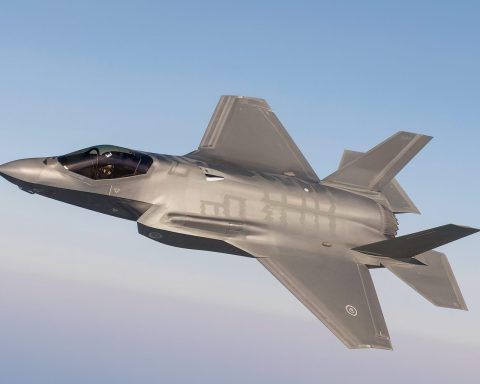- MiG-25 “Foxbat”: Mach 2.83 (about 1,900 mph / 3,058 km/h), the fastest operational fighter; in 1976 a defector flew one to Japan and testing reached Mach 3.2, with only a handful remaining in service as recon aircraft.
- MiG-31 “Foxhound”: Mach 2.83 (≈1,900 mph / 3,058 km/h) long-range interceptor and one of the fastest jets still in active service with Russia.
- F-15 Eagle: Mach 2.5+ (about 1,650–1,875 mph), introduced in the 1970s, with the F-15EX reportedly clocking top speeds near Mach 3 in tests while the official operational limit remains about Mach 2.5.
- Sukhoi Su-27 “Flanker” family: Mach 2.35 (≈1,550–1,600 mph) in ideal conditions, with the Su-30 and Su-35 derivatives sharing similar speeds.
- Grumman F-14 Tomcat: Mach 2.34 (≈1,544 mph / 2,484 km/h), a carrier-based interceptor famous from Top Gun and retired from U.S. Navy service in 2006, with ex-USN examples still operated by others.
- Mikoyan MiG-29 “Fulcrum”: Mach 2.3 (≈1,520 mph / 2,450 km/h), a twin-engine lightweight multirole fighter introduced in the 1980s and widely exported.
- IAI Kfir: Mach 2.3 (≈1,520 mph / 2,450 km/h), Israel’s Mirage-derived multirole fighter with a few still in service.
- Lockheed Martin F-22 Raptor: Mach 2.25 (≈1,500 mph / 2,414 km/h) and capable of supercruising at Mach 1.8 without afterburner, making it the fastest stealth fighter in operation.
- McDonnell Douglas F-4 Phantom II: Mach 2.23 (≈1,470 mph / 2,366 km/h), a legendary Cold War fighter-bomber with top speed above Mach 2.2 and still in limited service in some countries.
- Eurofighter Typhoon: Mach 2.0 (≈1,320 mph / 2,125 km/h), Europe’s frontline 4.5-generation multirole fighter with a maximum speed around Mach 2.0 in clean configuration.
When it comes to fighter jets, speed thrills – and in combat, it can save lives. Today’s most advanced military jets push the limits of physics, streaking across the sky faster than twice the speed of sound. From record-shattering Cold War interceptors to cutting-edge stealth fighters, this report ranks the fastest fighter aircraft by top speed and breaks down how U.S., Russian, Chinese and other jets compare. We’ll also look at experimental projects and upcoming sixth-generation planes, and discuss what recent expert analysis says about the trade-offs between raw speed and modern stealth. Buckle up as we hit Mach 2 and beyond!
World’s Fastest Fighter Jets: Top Speed Rankings (Mach & MPH)
Below is a ranking of some of the fastest fighter and interceptor aircraft, past and present, by their absolute top speed (at high altitude under ideal conditions). Speeds are given in both Mach (a multiple of the speed of sound) and in approximate miles per hour and kilometers per hour:
- Mikoyan-Gurevich MiG-25 “Foxbat” (USSR) – Mach 2.83 (≈ 1,900 mph or 3,058 km/h) – Role: High-altitude interceptor/reconnaissance. Notable: Fastest operational fighter jet ever; in testing it even hit Mach 3.2 (but risked engine damage) [1] [2]. Only a handful remain in service today as recon aircraft.
- Mikoyan MiG-31 “Foxhound” (Russia) – Mach 2.83 (≈ 1,900 mph or 3,058 km/h) – Role: Long-range interceptor. Notable: Based on the MiG-25, it can sustain very high speeds at high altitude. The MiG-31 is one of the fastest jets still in active service, used by Russia for air defense and to launch high-speed missiles [3] [4].
- McDonnell Douglas F-15 Eagle (USA) – Mach 2.5 (≈ 1,650 mph or 2,655 km/h) – Role: Air superiority fighter. Notable: The F-15 has long been the U.S. Air Force’s speed champion, officially rated “Mach 2.5-plus” [5]. The newest F-15EX variant even clocked a “top speed close to Mach 3,” according to Boeing test pilot Rob Novotny [6] – though its true limit is about Mach 2.5 (weapons and engine thermals impose practical limits) [7].
- Sukhoi Su-27 “Flanker” family (USSR/Russia) – Mach 2.35 (≈ 1,550–1,600 mph or 2,500–2,575 km/h) – Role: Air superiority/multirole. Notable: This includes the Su-27 and its advanced derivatives (Su-30, Su-35). Designed for blistering speed and climb, the Flanker can reach about Mach 2.3 at altitude [8], comparable to the F-15. The latest Su-35S can hit ~Mach 2.25 in level flight [9].
- Grumman F-14 Tomcat (USA) – Mach 2.34 (≈ 1,544 mph or 2,484 km/h) – Role: Carrier-based interceptor. Notable: Famed from Top Gun, the F-14 could exceed Mach 2.3 with its wings swept back [10]. Though retired from U.S. Navy service in 2006, it was one of the fastest Western jets of its era (Iran still operates ex-USN F-14s).
- Mikoyan MiG-29 “Fulcrum” (USSR/Russia) – Mach 2.3 (≈ 1,520 mph or 2,450 km/h) – Role: Lightweight multirole fighter. Notable: A widely exported twin-engine fighter introduced in the 1980s, the MiG-29 can attain around Mach 2.3 at high altitude in a clean configuration [11].
- IAI Kfir (Israel) – Mach 2.3 (≈ 1,520 mph or 2,450 km/h) – Role: Multirole fighter/attack. Notable: An Israeli development of the Mirage, the Kfir packs a powerful engine for its size and is capable of Mach 2.3 [12]. (A few are still in service with smaller air forces.)
- Lockheed Martin F-22 Raptor (USA) – Mach 2.25 (≈ 1,500 mph or 2,414 km/h) – Role: Stealth air superiority fighter. Notable: The F-22 can “supercruise” at Mach 1.5 (supersonic without afterburner) [13] and dash to around Mach 2.2 at altitude. It is the fastest stealth fighter in operation. (Officially “Mach two class” [14].)
- McDonnell Douglas F-4 Phantom II (USA) – Mach 2.23 (≈ 1,470 mph or 2,366 km/h) – Role: Fighter-bomber. Notable: A legendary Cold War jet, the Phantom’s brute twin engines gave it a top speed over Mach 2.2 [15]. Phantoms remain in limited service (e.g. Iran, Turkey). Phantom pilots jokingly said: “A brick can fly if you stick a big enough engine on it.” [16]
- Eurofighter Typhoon (UK/EU) – Mach 2.0 (≈ 1,320 mph or 2,125 km/h) – Role: Multirole fighter. Notable: Europe’s frontline fighter can reach Mach 2.0 in a clean config [17], making it one of the fastest actively operated 4.5-generation jets. (Its French cousin, the Dassault Rafale, tops out around Mach 1.8 ≈ 1,190 mph [18].)
Honorable mentions: Many modern fighters cap out around Mach 2.0, including the General Dynamics F-16 Fighting Falcon (≈Mach 2.05) and Sweden’s Saab JAS 39 Gripen (≈Mach 2.0, ~1,530 mph) [19]. Notably, China’s stealthy Chengdu J-20 “Mighty Dragon” is believed to reach about Mach 2.0 (est. ~1,320 mph or 2,130 km/h) [20] [21], despite its weight, thanks to powerful twin engines. And while the new F-35 Lightning II is one of the most advanced jets, its top speed is comparatively modest at Mach 1.6 (~1,200 mph or 1,930 km/h) [22] [23] – making it “almost slow” next to some Cold War fighters, as one analyst quipped [24].
Did You Know? The absolute fastest air-breathing aircraft ever was the SR-71 “Blackbird” spy plane, which routinely cruised above Mach 3 (over 2,200 mph). It wasn’t a fighter, but its interceptor variant – the YF-12A – did carry missiles and reached a blistering Mach 3.35 (2,232 mph or 3,342 km/h) in tests [25]. That remains the record for a “combat” jet aircraft. However, no fighter in service today approaches that speed.
Now, let’s examine these jets and others in more detail, and see how speed factors into their design and use.
Mach 3 Interceptors: Cold War Speed Demons
In the 1960s, speed was the name of the game as the U.S. and Soviet Union built interceptors to chase down high-flying bombers. The Soviet MiG-25 “Foxbat” was the iconic example – a twin-engine monster of an interceptor that stunned the West in 1976 when a defector flew one to Japan. NATO intel was amazed that the Foxbat had clocked around Mach 3 in sprints. In fact, on paper the MiG-25 remains the fastest fighter ever, at about Mach 2.8 (1,900 mph) [26] [27]. Pilots had to be careful not to exceed that, as the engines could overheat above Mach 3. The later MiG-31 “Foxhound” improved on the Foxbat with more range and radar; it too can hit ~Mach 2.8 and sustain high speeds better, thanks to its updated turbofan engines [28] [29]. To this day, MiG-31s serve in the Russian Air Force, often tasked with intercepting reconnaissance planes – or even carrying hypersonic missiles that benefit from the Foxhound’s high-altitude, high-speed launch profile.
What was the point of such extreme speeds? In the Cold War, outrunning the enemy’s weapons was seen as a viable tactic. These interceptors were designed to outrun or quickly reach enemy bombers (and early surface-to-air missiles). A famous American project, the YF-12A, was a prototype Mach 3+ interceptor developed from the Lockheed SR-71. It set speed records up to Mach 3.35 [30]. The YF-12 never went into mass production, but it proved that with enough engine power and the right materials (titanium to survive the heat), a fighter-sized aircraft could fly three times the speed of sound. Similarly, the cancelled Soviet MiG-25M and proposed MiG-31 variants aimed to push toward Mach 3. Thermal stress and fuel consumption were the limiting factors – even today, jet engines and airframes can only sustain Mach 2+ for short durations without coming apart or guzzling fuel.
Interestingly, Russia has floated proposals to develop a next-generation high-speed interceptor, the so-called MiG-41 (PAK DP), to eventually replace the MiG-31. Ambitiously, the MiG-41 is rumored to target Mach 4+ top speeds and even operate at “near-space” altitudes [31] [32]. Mikoyan’s CEO Ilya Tarasenko has claimed this sixth-gen interceptor “will reach speeds in excess of Mach 4, with cruising speed around Mach 3” [33]. Such performance, paired with stealth technology and laser weapons, sounds like science fiction – and many analysts doubt the cash-strapped Russian program will get far [34] [35]. Still, the fact they dream of a Mach 4 fighter shows the enduring allure of speed.
The Mach 2.5 Club: F-15 Eagle and Other Speed Champs
For more typical fighters, Mach 2 to 2.5 has been the upper limit for decades. The reigning king here is the American F-15 Eagle, introduced in the 1970s and still a top performer. The F-15 was built for air superiority with a powerful twin-engine setup and low drag design, officially “capable of Mach 2.5+” in its early versions [36]. In practice that means about 1,650–1,875 mph at high altitude. No surprise the F-15 has never lost in air-to-air combat, and part of that is thanks to its ability to dictate engagements with speed (it can climb and accelerate incredibly fast). Even today, the U.S. is fielding the F-15EX, a new updated Eagle II. In early 2024, Boeing’s program manager Rob Novotny – himself a former F-15 test pilot – stirred buzz by stating the F-15EX “can clock a top speed close to Mach 3”, roughly Mach 2.9 or ~2,225 mph in tests [37] [38]. He later clarified the operational limit remains about Mach 2.5 (≈1,900 mph), as listed in the official fact sheet [39]. Still, this makes the Eagle II arguably the fastest active fighter in the West. As one defense writer noted, “The F-15EX is, quite literally, the fastest aircraft in Uncle Sam’s operational inventory.” [40]
The Eagle’s speed was matched by a few peers. The Soviet Su-27 “Flanker” was a direct competitor, designed to protect vast USSR airspace. With its sleek lines and powerful AL-31 engines, the Su-27 can hit about Mach 2.35 (~1,600 mph) in ideal conditions [41]. Its modern offshoot, the Su-35S, also tops out around Mach 2.25–2.35 [42]. These Russian fighters trade blows with similar speed to the F-15. Another classic is the Grumman F-14 Tomcat, the U.S. Navy’s Mach 2.3 carrier fighter of the 1970s-90s [43]. The Tomcat’s swing-wings gave it both low-speed control for carrier landings and high-speed dash capability when swept. Former F-14 pilots recall that even with a full weapons load the Tomcat could hit Mach 2+ without much fuss – one reason it was so valued for long-range fleet air defense (it could sprint out to intercept incoming bombers). Though the F-14 is retired (except in Iran), its Mach 2.3 legacy lives on in pop culture and in comparisons with today’s jets.
Other notables in the Mach 2+ club include the MiG-23 “Flogger” (Mach 2.3) and MiG-21 “Fishbed” (Mach 2.05), which were Soviet fighters of earlier generations – fast in a straight line, though not nearly as agile or advanced as later jets. Several 1970s-era European fighters also reached around Mach 2 to 2.2, such as the Dassault Mirage F1 and Mirage 2000 (around Mach 2.2) and the British English Electric Lightning (Mach 2.0). These aircraft set the template that roughly Mach 2 – 2.5 is “enough” for fighters to perform their missions.
Mach 2 with Stealth: 5th-Generation Fighters (F-22, J-20, Su-57)
While raw speed peaked in the 20th century, today’s 5th-generation fighters still pack plenty of supersonic punch – but with the added trick of stealth. The American F-22 Raptor is a prime example: it is officially a Mach 2-class jet [44] and reputedly can reach around Mach 2.25 (~1,500 mph) at altitude in afterburner. Uniquely, the F-22’s powerful F119 engines let it supercruise at ~Mach 1.8 without afterburner, carrying missiles internally [45]. This means it can sustain supersonic flight while remaining fuel-efficient and stealthy (afterburners tend to produce huge infrared plumes). The Raptor’s combination of stealth and speed gives it a big tactical edge – it can engage or disengage at will. However, even the F-22’s top speed is nowhere near the old Mach 3 record-setters. Designers capped it around Mach 2+ in part to avoid compromises in stealth shape and materials. As one U.S. Air Force general recently noted, the forthcoming 6th-gen fighter will likely also “fly at Mach 2+, which is [only] twice the speed of sound” – roughly the same top end as the F-22 [46].
Russia’s newest stealth fighter, the Sukhoi Su-57 “Felon”, has a similar speed envelope. It is designed to reach about Mach 2.0 (≈1,320 mph) at altitude [47]. Current Su-57s use engines derived from the Su-35, so performance is in the same ballpark (Mach 2 class, and it reportedly can supercruise around Mach 1.3) [48]. Planned new engines may improve its acceleration and efficiency, but not dramatically raise the max speed. Likewise, China’s Chengdu J-20 “Mighty Dragon” – a large twin-engine stealth jet – is believed to be capable of Mach 2. Chinese officials haven’t published exact numbers, but estimates put the J-20’s top speed around 1,300–1,400 mph [49] [50]. Early J-20s with older Russian AL-31 engines might have been a bit slower (some sources suggested ~Mach 1.7), but newer indigenous WS-10C engines likely bring it up to Mach 2. The J-20 is more optimized for range and stealthy carriage of weapons than for extreme speed.
It’s telling that none of these 5th-gen stealth fighters try to chase Mach 3. Designers have concluded that super-agility, sensor fusion, and low observability matter more in modern air combat than raw velocity. Still, being able to hit Mach 2 when needed is important – for instance, to deploy weapons with extra kinetic energy or to evade certain threats. The F-22 in particular was built to boom and zoom: zoom into a fight unseen, then “bug out” at high speed if necessary. As an Air Force pilot explained, sometimes “the best tactical decision a pilot can make is to ‘bug out’… That’s where speed, once again, becomes vital to survival.” [51] Stealth jets maintain that ability to run, even if they rarely use their top speed in practice.
The Mach 1.8–2.0 Club: Modern Multirole Fighters
Outside the stealth world, many advanced 4th-generation and “4.5-gen” fighters in service today still have impressive speed specs around the Mach 2 mark – even if they usually carry pods and tanks that keep them subsonic on missions. The Eurofighter Typhoon, operated by several European nations, boasts a maximum speed around Mach 2.0 (≈1,550 mph) at altitude [52]. In exercises, Typhoons have demonstrated the ability to intercept targets very quickly, accelerating well beyond Mach 1 with ease. Similarly, France’s Dassault Rafale can reach Mach 1.8 (~1,190 mph) in high-altitude sprints [53]. The Rafale traded a bit of top speed for superb low-speed handling and payload, but it’s still a true supersonic thoroughbred. Sweden’s smaller JAS 39 Gripen also manages about Mach 2.0 (~1,530 mph) despite having just one engine, thanks to an efficient aerodynamic design [54].
Classic U.S. multirole jets like the F-16 Fighting Falcon and F/A-18 Hornet/Super Hornet fall in this category as well. The F-16’s top end is about Mach 2.0–2.05 depending on the variant (around 1,320–1,350 mph) [55] [56], though in combat configuration it would rarely approach that. The Boeing F/A-18E/F Super Hornet (the U.S. Navy’s current workhorse) is a bit slower, roughly Mach 1.6–1.8 (~1,190 mph) clean [57] [58], due to its heavier frame and carrier-friendly design. Notably, some air forces have found ways to squeeze out more speed when needed: for instance, modernized F-16s with engine upgrades, or the Israeli F-15I, can edge above their original limits in short dashes.
It’s worth remembering that these published “max speeds” are often achieved only at optimal altitudes and with minimal external stores [59] [60]. In day-to-day operations, fighter jets usually fly well below their top Mach. Fuel economy, airframe stress, and mission needs dictate a more measured pace. As the AeroTime aviation outlet notes, many jets that can break Mach 2 only do so in test conditions – “in real-world situations, the jets tend to fly significantly slower.” [61] High speed is a nice reserve capability, but is seldom used in full. A Typhoon or Rafale cruising on patrol might stay around Mach 0.9 (just below the sound barrier) until something pops up that demands a dash.
Speed vs. Stealth: Is Supersonic Still Important?
With the rise of stealth and advanced missiles, some argue that top speed isn’t as critical as it once was. After all, a modern air-to-air missile (like the AIM-120 AMRAAM or Russia’s R-77) can travel at Mach 4+ – far faster than any fighter – so you can’t outrun a missile. And flying super fast can make an aircraft easier to detect (plasma heating, big afterburner plumes, etc.). This is why jets like the F-35 Lightning II chose to limit speed to ~Mach 1.6 in exchange for other advantages. As defense analyst Alex Hollings puts it, “the F-35, for all its faults, is widely touted as perhaps the most capable tactical aircraft in history, despite being almost slow compared to Cold War powerhouses like the F-14.” [62] [63] Pilots today often emphasize sensors, networking, and low observability over sheer speed.
However, there’s a flip side: speed still matters in certain scenarios. In a sprawling conflict or quick-reaction alert, a faster jet can cover ground (or water) much more quickly to respond to threats. Former fighter pilot and author Col. Dan Hampton famously said, “Speed is life,” highlighting that in a dogfight, the energy from speed and altitude is a crucial advantage. Even in beyond-visual-range combat, being fast can let you launch missiles with greater kinematic energy (extending their range) or allow you to engage and then egress rapidly. If a mission goes sour, a speedy exit (to “extend” or escape) can be the difference between life and death. As one analysis notes, in a future Pacific scenario the U.S. “would benefit from a renewed emphasis on speed in combat aviation… even at the expense of observability in some platforms.” [64] [65] This is partly because not all conflicts will be high-end stealth duels; sometimes you just need an aircraft that can “reach operators in need, provide air support, and still make it back” quickly [66] (for example, reaching special forces in trouble in a remote region).
Recent news reflects this balancing act. The U.S. Air Force’s forthcoming sixth-gen fighter (nicknamed “F-47” in some reports) is expected to have a top speed on par with the F-22 – i.e. Mach 2+ [67]. “Twice the speed of sound” is fast, but notably not faster than previous jets. The focus for next-gen seems to be more on range, sensor fusion, and multi-role flexibility than on pushing the speed envelope further. In contrast, there’s speculation that future unmanned combat drones or mixed formations could handle extreme speeds better (since you can design a drone to withstand higher G and thermal loads without a pilot). We might see optionally manned interceptors in the future that can go hypersonic in bursts – but those are still on the drawing board.
The Future: Hypersonic Dreams and Upcoming Fighters
Looking ahead, will any fighter break the Mach 3 barrier again? For now, it appears unlikely in manned fighters. The trend for sixth-generation projects in the U.S., Europe, and China is to stick around the Mach 2 range but greatly enhance other capabilities. For example, the UK–Italy–Japan “Tempest” fighter (part of the Global Combat Air Programme) is designed for longer range and smarter systems rather than raw speed – officials hint at Mach 2-class performance similar to current jets, but with far greater range and payload than Eurofighter [68] [69]. The same goes for the Franco-German-Spanish FCAS program. These jets will likely supercruise (fly supersonic without afterburner) at maybe Mach 1.5+, but their max afterburner dash might top out around 2.0–2.5. Indeed, an aerospace briefing noted “even the forthcoming sixth-generation fighters are projected to have maximum speeds of Mach 2.2–2.5. They really don’t make them like they used to.” [70]
One area where speeds might leap ahead is unmanned or experimental vehicles. Boeing and NASA’s X-43 scramjet demonstrator famously hit Mach 9.6 (over 7,000 mph) in 2004 – but that was a small unmanned test article, not a practical weapon. Lockheed Martin has teased a concept called the SR-72, an unmanned hypersonic aircraft aimed at Mach 6 for reconnaissance/strike. If built, it would make the SR-72 essentially a drone successor to the SR-71 Blackbird, possibly capable of surveillance or even launching hypersonic missiles before enemies can react. While not a fighter per se, such a platform blurs the line – could we see a hypersonic interceptor drone that shoots down other high-speed threats? It’s conceivable in a couple decades.
As for fighters, the MiG-41 concept we discussed is one wild card, promising Mach 4 speeds if it ever comes to fruition [71] [72]. Another is China’s rumored “J-36” sixth-gen project, which Chinese sources have hinted might be a high-speed, long-range platform (details are scarce and possibly disinformation). Until we see a prototype, it’s safe to assume tomorrow’s fighters will mostly hover around Mach 2, not Mach 5. The engineering challenges of anything faster – heat, structural stress, fuel burn – are daunting. Even in the 1960s, designers like Kelly Johnson (of Lockheed Skunk Works) knew that sustaining much above Mach 3 required exotic solutions (the Blackbird series had to use special fuel and leak like a sieve on the ground because of expansion at speed).
In summary, the fastest fighter jets in history came from a unique period when raw speed was a top priority. The MiG-25s and YF-12s of the world blazed new trails at Mach 3, but tactics and technology have shifted focus to other traits. Today’s advanced fighters still achieve blazing speeds of Mach 1.8–2.5, which is plenty to get the job done in most scenarios. They balance speed with stealth, agility, and information superiority. As one fighter pilot quipped regarding modern jets: “The F-35A can hit Mach 1.6… The long-retired Tomcat could pass Mach 2.3 without breaking a sweat. The truth is, in a high-end fight…slower stealth jets might actually be preferable to faster, more easily detected ones.” [73] [74] In other words, speed is one tool among many.
Yet, speed will never go out of style completely. The exhilaration and tactical advantages of going faster than the adversary ensure that aerospace engineers will always seek new ways to gain an edge. Whether through cutting-edge engines, novel airframe designs, or even hybrid rocket propulsion, the quest for the next “fastest fighter” continues – and the Mach meter might inch up again in the future. For now, though, the fighters patrolling our skies top out around Mach 2, carrying on the legacy of the Cold War speed demons but tempered by the lessons learned since. In the eternal dance of fighter combat, sometimes you need to sprint – and when you do, these jets are ready to unleash their top speeds in a roar of afterburner fury.
Sources:
- AeroTime News, “Top 10 fastest fighter jets in the world in 2025” (Dec 29, 2024) – specifications and rankings of fighter jet speeds [75] [76] [77].
- U.S. Air Force Fact Sheets – official speed and performance data for F-15 Eagle (Mach 2.5+), F-22 Raptor (Mach 2 class), F-35 (Mach 1.6) [78] [79] [80].
- Interesting Engineering – Interview with Boeing F-15EX program manager (Feb 2024), quoting top speed near Mach 3 and clarifying Mach 2.5 (~1,900 mph) limit [81] [82].
- The National Interest – Alex Hollings, “The Speed of a Fighter Jet Is Just as Important as Its Stealth” (2021), analysis of modern speed vs stealth trade-offs [83] [84] [85].
- The National Interest – Harrison Kass, “Russia’s MiG-41 Mach 4 Fighter…” (Nov 9, 2024), reporting Russian claims of Mach 4+ interceptor development [86] [87].
- Dassault Aviation – Rafale fighter official specs (Mach 1.8 top speed) [88].
- Eurofighter GmbH – Typhoon performance facts (Mach 2.0 top speed) [89].
- Reuters and DefenseNews reports – Chinese J-20 estimates (Mach ~2.0) [90] [91].
- “This Day in Aviation” archive – data on Lockheed YF-12A interceptor (record Mach 3.35) [92].
- Interesting Engineering – USAF General Allvin’s statement (May 2025) on sixth-gen fighter Mach 2+ speed and comparison to F-35/F-22 [93].
- National Museum of USAF / Air Force fact sheets – historical notes on F-4 Phantom II, etc. [94] [95].
- Defense publications (Military Factory, FlightGlobal World Air Forces 2025) – various fighter specifications and service status [96] [97].
References
1. www.aerotime.aero, 2. www.aerotime.aero, 3. www.aerotime.aero, 4. www.aerotime.aero, 5. interestingengineering.com, 6. interestingengineering.com, 7. interestingengineering.com, 8. www.aerotime.aero, 9. byjus.com, 10. www.aerotime.aero, 11. www.aerotime.aero, 12. www.aerotime.aero, 13. www.af.mil, 14. www.af.mil, 15. www.aerotime.aero, 16. www.aerotime.aero, 17. www.defenseadvancement.com, 18. nationalinterest.org, 19. fightson.net, 20. en.wikipedia.org, 21. nationalinterest.org, 22. www.lockheedmartin.com, 23. www.af.mil, 24. nationalinterest.org, 25. www.thisdayinaviation.com, 26. www.aerotime.aero, 27. www.aerotime.aero, 28. www.aerotime.aero, 29. www.aerotime.aero, 30. www.thisdayinaviation.com, 31. nationalinterest.org, 32. nationalinterest.org, 33. nationalinterest.org, 34. nationalinterest.org, 35. nationalinterest.org, 36. www.af.mil, 37. interestingengineering.com, 38. interestingengineering.com, 39. interestingengineering.com, 40. nationalinterest.org, 41. www.aerotime.aero, 42. byjus.com, 43. www.aerotime.aero, 44. www.af.mil, 45. www.af.mil, 46. interestingengineering.com, 47. en.wikipedia.org, 48. en.wikipedia.org, 49. en.wikipedia.org, 50. nationalsecurityjournal.org, 51. nationalinterest.org, 52. www.defenseadvancement.com, 53. nationalinterest.org, 54. fightson.net, 55. www.aerotime.aero, 56. www.aerotime.aero, 57. www.nasa.gov, 58. simpleflying.com, 59. www.aerotime.aero, 60. www.aerotime.aero, 61. www.aerotime.aero, 62. nationalinterest.org, 63. nationalinterest.org, 64. nationalinterest.org, 65. nationalinterest.org, 66. nationalinterest.org, 67. interestingengineering.com, 68. interestingengineering.com, 69. interestingengineering.com, 70. www.aerotime.aero, 71. nationalinterest.org, 72. nationalinterest.org, 73. nationalinterest.org, 74. nationalinterest.org, 75. www.aerotime.aero, 76. www.aerotime.aero, 77. www.aerotime.aero, 78. www.af.mil, 79. www.af.mil, 80. www.af.mil, 81. interestingengineering.com, 82. interestingengineering.com, 83. nationalinterest.org, 84. nationalinterest.org, 85. nationalinterest.org, 86. nationalinterest.org, 87. nationalinterest.org, 88. nationalinterest.org, 89. www.defenseadvancement.com, 90. en.wikipedia.org, 91. nationalsecurityjournal.org, 92. www.thisdayinaviation.com, 93. interestingengineering.com, 94. www.aerotime.aero, 95. www.aerotime.aero, 96. www.aerotime.aero, 97. www.aerotime.aero










